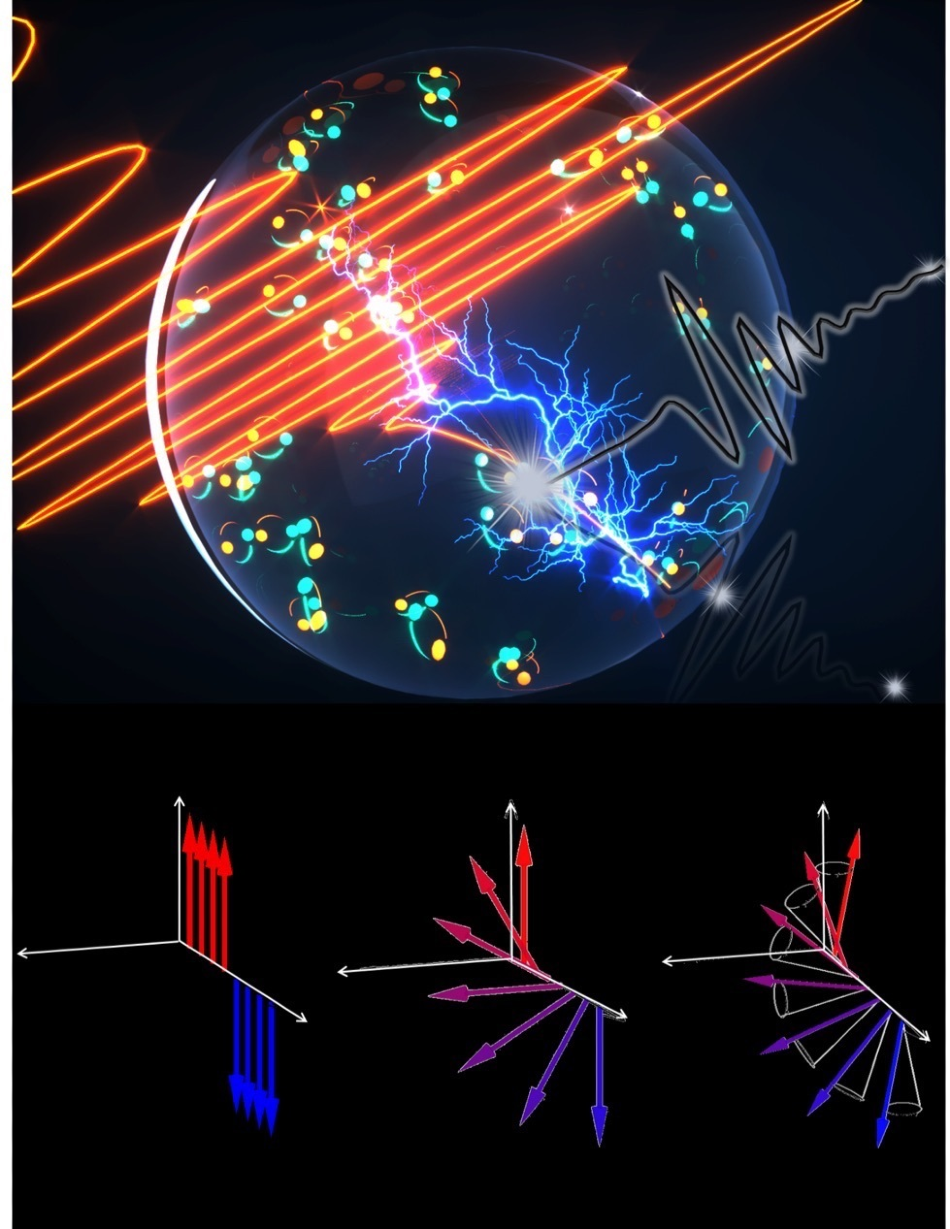May 20 2020
Light waves are being used by researchers to speed up supercurrents, as well as to access the exclusive properties of the quantum realm, such as forbidden light emissions. Such unique properties could someday be applied to communications, high-speed quantum computers, and other types of technologies.
 This illustration shows light wave acceleration of supercurrents, which gives researchers access to a new class of quantum phenomena. That access could chart a path forward for practical quantum computing, sensing, and communicating applications. Image Credit: Image courtesy of Jigang Wang.
This illustration shows light wave acceleration of supercurrents, which gives researchers access to a new class of quantum phenomena. That access could chart a path forward for practical quantum computing, sensing, and communicating applications. Image Credit: Image courtesy of Jigang Wang.
According to Jigang Wang, a professor of physics and astronomy at Iowa State University, the researchers have observed unanticipated things in supercurrents—for example, electricity that travels via materials without any kind of resistance, typically at ultra-cold temperatures—that break down the symmetry and are apparently forbidden by the traditional laws of physics.
Wang is also the leader of the project and a senior scientist at the U.S. Department of Energy’s Ames Laboratory.
Wang’s laboratory was the first to apply light pulses at terahertz frequencies—that is, trillions of pulses per second—to speed up electron pairs, called Cooper pairs, inside supercurrents. In this example, the scientists monitored the light produced by the accelerated electron pairs.
Interestingly, the researchers discovered light or “second harmonic light emissions” at double the frequency of the incoming light used for expediting the electrons. According to Wang, that is similar to colors changing from the red spectrum to the intense blue.
These second harmonic terahertz emissions are supposed to be forbidden in superconductors This is against the conventional wisdom.
Jigang Wang, Professor, Department of Physics and Astronomy, Iowa State University
Wang and his colleagues have reported their findings in a research paper recently published online by the scientific journal Physical Review Letters. The collaborators included Ilias Perakis, professor and chair of physics at the University of Alabama at Birmingham, and Chang-beom Eom, the Raymond R. Holton Chair for Engineering and Theodore H. Geballe Professor at the University of Wisconsin-Madison.
The forbidden light gives us access to an exotic class of quantum phenomena—that’s the energy and particles at the small scale of atoms—called forbidden Anderson pseudo-spin precessions.
Ilias Perakis, Professor and Chair of Physics, University of Alabama at Birmingham
(The phenomena are dubbed after the late Philip W. Anderson, who was the co-winner of the 1977 Nobel Prize in Physics and carried out theoretical analyses on the movements of electrons inside disordered materials, like glass, that do not have a regular structure.)
Wang’s latest studies were realized with the help of a tool—known as quantum terahertz spectroscopy—that is capable of visualizing and guiding electrons. Using terahertz laser flashes as a control knob, quantum terahertz spectroscopy speeds up supercurrents and accesses novel and potentially handy quantum states of matter.
The development of the instrument and the present analysis of the forbidden light were supported by the National Science Foundation.
According to researchers, access to these quantum states of matter and other quantum phenomena can help fuel breakthrough innovations.
Just like today’s gigahertz transistors and 5G wireless routers replaced megahertz vacuum tubes or thermionic valves over half a century ago, scientists are searching for a leap forward in design principles and novel devices in order to achieve quantum computing and communication capabilities.
Ilias Perakis, Professor and Chair of Physics, University of Alabama at Birmingham
Perakis continued, “Finding ways to control, access and manipulate the special characteristics of the quantum world and connect them to real-world problems is a major scientific push these days. The National Science Foundation has included quantum studies in its ‘10 Big Ideas’ for future research and development critical to our nation.”
“The determination and understanding of symmetry breaking in superconducting states is a new frontier in both fundamental quantum matter discovery and practical quantum information science. Second harmonic generation is a fundamental symmetry probe. This will be useful in the development of future quantum computing strategies and electronics with high speeds and low energy consumption,” Wang added.
But before they can reach there, scientists have to perform more research on the quantum world. According to Wang, this forbidden second harmonic light emission in superconductors denotes “a fundamental discovery of quantum matter.”
Journal Reference:
Vaswani, C., et al. (2020) Terahertz Second-Harmonic Generation from Lightwave Acceleration of Symmetry-Breaking Nonlinear Supercurrents. Physical Review Letters. doi.org/10.1103/PhysRevLett.124.207003.